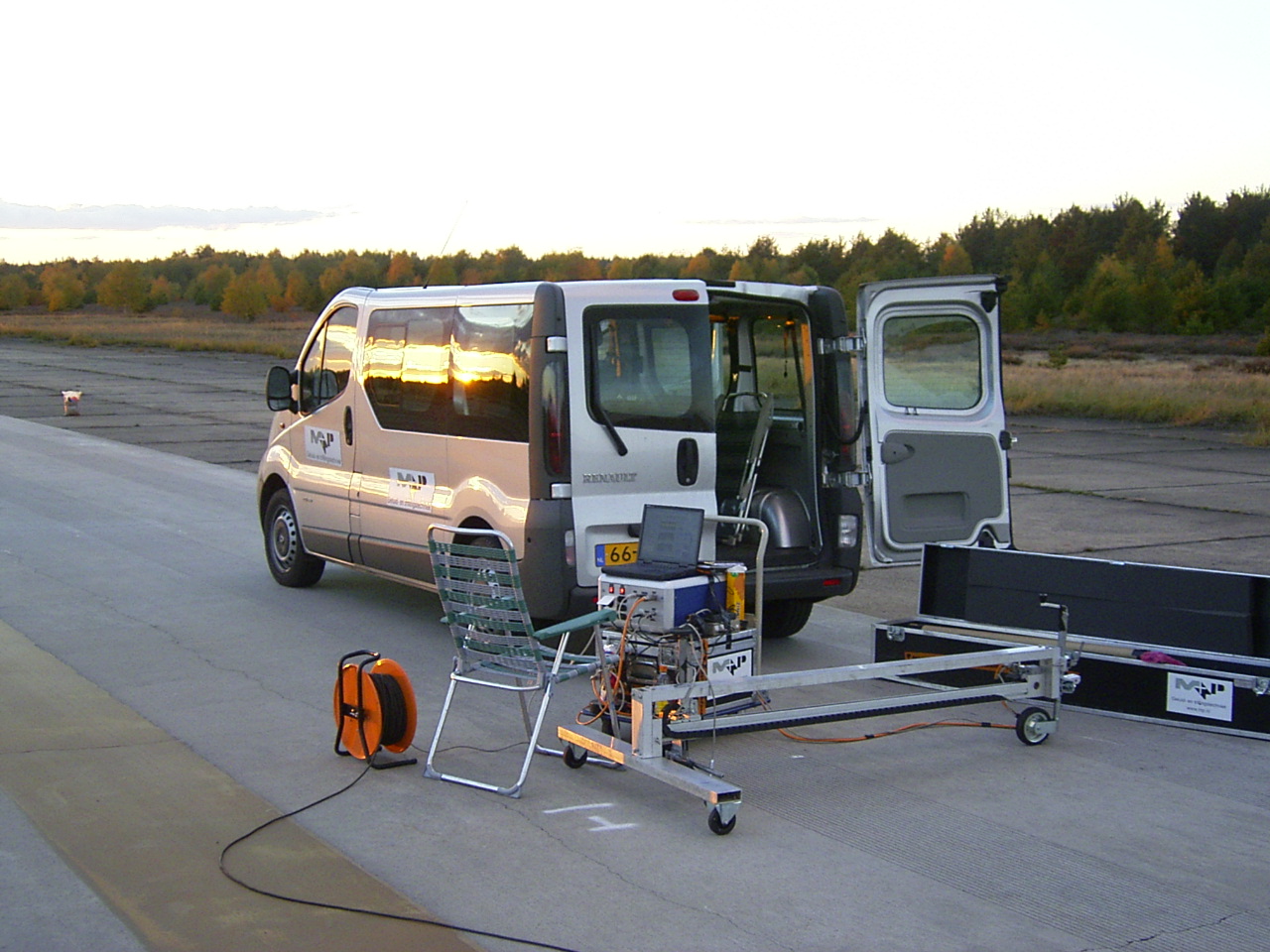Measuring at all hours
For the measurements we take at M+P, we are often on the road at unusual times and locations. Measuring technician Patrick Meelen and consultant Mark Mertens can draw on years of experience, rattling off one story after another.
Patrick has just returned from a trip to Ireland to measure how quiet the road surface is at various locations across the country. An extraordinary experience, he says. ‘To begin with, it took months of preparation. For example, arranging the insurance required by their regulations. On top of that, I had to leave as early as 5 o'clock on Monday morning, only getting off the boat at 11 o'clock the following day. I also had to get used to the local driving style on the often narrow roads. People do leave enough room for each other, but only at the last moment. You just have to have faith that they will.’
Going abroad unprepared
These types of trips abroad are a regular occurrence at M+P, says Mark. ‘Foreign research into quiet road surfaces initially began for us in Denmark. Later, Belgium and Germany were added, and in the meantime we also receive requests from, for example, Austria and Ireland. These investigations are very much dependent on the weather; for example, the road has to be completely dry. Which is why they're impossible to plan properly. Once, we even had to call someone on Monday morning to ask if he could come along to Switzerland that same day. This obviously requires a lot of flexibility from our colleagues and their partners at home. There have also been times when a colleague couldn't make it and I myself had to go along to take a measurement that I hadn't done for years. So I did it with my phone in my hand.'

Adjusting your daily rhythm
M+P examines not only the effect of the road surface on noise, but also on fuel consumption. This is naturally a hot topic because of CO2 emissions. The Danish government, for example, has asked us to look at this. Mark: ‘This kind of research is even more sensitive. For this, there shouldn't be too much wind, or too much traffic in front of you. If this turns out to be the case anyway, measurements often have to be repeated.' Patrick: 'In Denmark, the weather is even more changeable than here. So, sometimes the wind is too strong, and you have to reschedule your measurements. Which also means adjusting your daily routine and, for example, arranging a hotel so you can get some sleep during the day.’
Cutting through ice on the tracks at night
And then you have measurements on the track. These almost invariably have to take place at night so as not to interfere with train timetables, Mark explains. ‘And when it's freezing, for example, trains are often running to keep the track free of ice, which means you can't measure.’ Patrick: ‘In fact, I've even had firsthand experience of cutting through ice on the track ourselves in order to take proper measurements. It's at times like these you're glad you're wearing thermal underwear. Another time, we were simply kicked off the train because the driver's shift was over. As you can see, there's always something happening on the tracks.’

